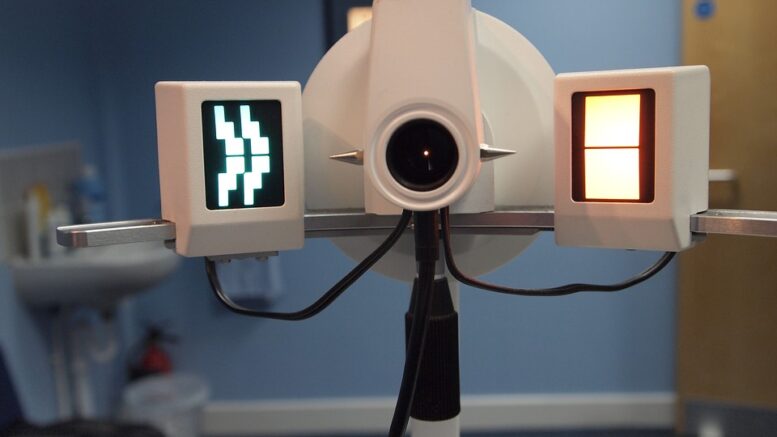The eye is like a camera. It receives light all the time, and there are a series of refractive pieces in the eye. The cornea and the lens make up the refractive system of the eye. Light rays come in through those two components of the refractive system. If you have perfect vision, the light rays are focused exactly on the back of your eye. When you hear of astigmatism, it isn’t about the entire eyeball assuming the shape of a soccer ball or volleyball. It only refers to the shape of the cornea.
The Cornea
The cornea is one of the structures that bend or refract light. When the light is bent, it is focused on the back of the eye, or macula. The focused image is sent back to the brain for interpretation. That is how you see the world. Your cornea is perfectly round like a soccer ball if you do not have astigmatism. When your cornea does have astigmatism, it assumes a more oblong shape. This football-shaped cornea has one steep curvature and another flat one.
It results in the cornea having two different refractive indices instead of one. When you go to an eyeglass store, look for the astigmatism test board. It is a rudimentary test that will show you if you have any symptoms of astigmatism. When you look at your prescription, the column that says CYL is the one that shows your astigmatism prescription. A large, reputable eye glass store will also have an in-house eye testing facility.
What Is Irregular Astigmatism?
The deformity of the cornea described above is called regular astigmatism. There is another type of astigmatism that is known as irregular astigmatism. The characteristics of which are different. While regular astigmatism may be part of the aging process, irregular astigmatism isn’t. It can be caused by trauma, surgery, or different disease processes.
If you have degenerative corneal diseases like keratoconus or pellucid marginal degeneration, it can cause your cornea to become irregular. Corneas have a very predictable curve. When the curvature becomes unpredictable, it becomes very hard to correct the vision through lenses or glasses. Irregular astigmatism may be the result of badly done LASIK surgery as well.
What You Will Experience if You Have Astigmatism
You are most likely aware of nearsightedness and farsightedness. Nearsightedness occurs when you can see objects close to you, but objects far away are blurred. Farsightedness is just the opposite. Objects far away from you appear clear, and objects close to you are blurred. The light rays are still focused on the same point with either of these anomalies.

Astigmatism is different. With this anomaly, light rays are focused in two different places. Thus, you have slightly blurry vision at all distances. For example, if you have little astigmatism, you will notice blurry vision when you drive in the rain at night. It is one of the most commonly reported symptoms of low astigmatism.
Another common symptom is that you might notice strain and blur while you work on your computer. It tends to happen over time if your condition isn’t corrected. It can also happen with objects that are close to you. You might notice some pulling, stretching, or ghosting of the letters in front of you when you are reading.
How to Correct Astigmatism
Here is some good news for you. Most astigmatism seen in patients is regular astigmatism. And this is easily corrected with glasses. All the factors in the glasses, like the axis and distance from the eye, can be controlled. The correct glasses will give you clear, sharp vision.
The second option is contact lenses. There is a misconception that patients with astigmatism cannot get contact lenses, which isn’t true anymore. There are a lot of contact lens options available now that correct astigmatism, even for higher ranges. Both hard and soft lenses are available for correction. Hard lenses are of two different types – rigid gas permeable lenses and scleral lenses. However, it is recommended that you opt for soft lenses.
What About Permanent Options?
Refractive surgeries are an option to avoid contact lenses and glasses. It would be best to talk to your eye care practitioner. Note that having astigmatism does not preclude you from having any other eye surgery like LASIK or PRK. Cataract operations are also a time when patients opt for astigmatism correction. You can get implants during a cataract operation.
For various reasons, it is best to get regular eye checkups. If you notice any of the symptoms above or see cylindrical power on your next prescription, you now know your options.
